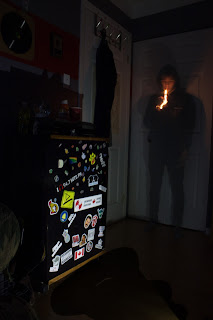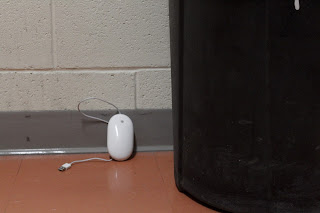Tuesday, 17 April 2018
Tuesday, 27 March 2018
Video Camera Settings
1. your camera (manufacturer & model)
answer:
- Canon Rebel T4i
2. the sensor size (in mm: ? x ?), maximum megapixel rating, sensor type (eg “APS-H”)
answer: 22.3mm x 14.9mm APS-C
3. lenses you own & can use on your video recording-capable camera
— in 35mm equivalent focal length range, associated widest apertures
answer: 28.8 (f3.5- f22) 88 (f5.6-f36)
-
4. biggest memory card you own in terms of capacity (in GB), class (eg “class 10”),
and card speed (eg. x 133).
If it’s an SD type card, which class is it? (e.g.. class 10)
Read the following article from B&H PhotoVideo which indicates all relevant aspects of cards:
Memory Cards Explained
Memory Cards Explained
Which class of card do you need for shooting video? What does your SD card classification
mean in terms of writing speed: is it fast enough to be shooting video?
answers: 16 GB, class 10, 300x 45mb/s
- To shoot video the class must be 6 or higher. Yes my card is class 10 so it is fast enough to shoot video.
5. How many minutes of video capacity does your biggest memory card have shooting at both the
highest & lowest resolution capture settings?
Also, does your camera have a limit on the amount of video shooting time?
What is the technical reason for limiting single shot video shooting time?
State your answers as memory card size / recording quality (resolution & mode) & maximum minutes
( eg. 8GB memory card / 1280 x 720p [SD mode] yields 20 min. of video)
(NB. you will probably have to test this out by turning on your camera with your empty reformatted
memory card installed, the display set to indicate total frames remaining/total video time available,
video quality set to highest and then lowest resolutions)
answers:
- highest resolution no. of minutes: 1920px1080p, 44 mins, 330mb/min
- lowest resolution no. of minutes: 640px480p, 3h 40mins, 82.5mb/min
6. maximum file size per clip
answer:
-1920px1080p, 330mb/min
-1280px720p, 330mb/min
-640px480p, 82.5mb/min
8. format of movie files created (eg. QuickTime Motion JPEG, AVCHD, MPEG4, etc.)
(... there’ll probably be more than one, depending on camera and resolution sizes & modes)
answers:
-MPEG-4
-AVC/H.264
-AVC/H.264
9. which video output resolutions does your camera produce?
try to include all of the following info for each level of video resolution your camera produces:
- (sample answer might be: 720p / 1280 x 720 pixels/ SD / 4:3 / 30fps)
answers:
- 1920px1080p/ HD/ 16:9/ 30fps, 25fps, 24fps
-1280px720p/ HD/ 16:9/ 60fps, 50fps
- 640px480p/ SD/ 4:3/ 30fps, 25fps
10. looking at the above resolution dimensions available, are they using the same aspect ratio or not?
(eg. 800 x 600 is a 4:3 aspect ratio while 1920 x 1080 is a 16:9 aspect ratio).
What are the differing aspect ratios for each of your camera's video format resolutions?
(eg. 800 x 600 is a 4:3 aspect ratio while 1920 x 1080 is a 16:9 aspect ratio).
What are the differing aspect ratios for each of your camera's video format resolutions?
answers:
-1920px1080p/ 16:9
-1280px720p/ 16:9
-640px480p/ 4:3-1920px1080p/ 16:9
-1280px720p/ 16:9
11. shutter speed range your camera can record video in: does your camera permit you to set shutter
speed when recording video? (Can you in fact set manual setting for video shooting?) Whether it
does or not, what shutter speeds can you set on your camera for shooting video?
answers:
-Yes my camera does permit me to set shutter speed I can set it from 30-4000.
12. aperture: does your camera permit you to set the aperture when recording video?
answers:
-Yes my camera permits me to set the aperture. I can set it from f3.5-f22.
13. shutter speed & aperture restrictions — answer this only if your camera does not permit you to
choose manual video shooting settings.
If your camera doesn’t have manual setting capabilities, what other camera setting can you use to
control exposure then?
answers:
-
14. focus: how does your camera focus when shooting video? Does it permit you to manually focus
or are you left with autofocus only?
eg. — The most important thing to know about the Nikon D5000’s video controls is the fact that the camera cannot
autofocus while video is being recorded. You can autofocus the image before recording begins (by pressing the shutter
button halfway down, just like you do with still images), but once you start recording you must manually focus
everything..When you try to autofocus while recording, the camera lens moves and changes exposure just as if
you’re autofocusing a still image.
answers:
- My camera allows me too choose either manual focus or automatic focus
button halfway down, just like you do with still images), but once you start recording you must manually focus
everything..When you try to autofocus while recording, the camera lens moves and changes exposure just as if
you’re autofocusing a still image.
answers:
- My camera allows me too choose either manual focus or automatic focus
15. your camera records video at what data rate (expressed in MB/sec. or mbps)
answer:
-1920px1080p (48 mbps) 640px480p (10mbps)
-1920px1080p (48 mbps) 640px480p (10mbps)
16. specific and particular settings recommended for your camera model — the best way to
do this is to look at the camera reviews for your model on preview.com and/or imaging resource.com
and read their review section on the video functioning (often listed as “video” or “movie” review section).
You can also research this in a Google search —eg. at least one very popular camera (hint: 5D) has
You can also research this in a Google search —eg. at least one very popular camera (hint: 5D) has
suggested settings for ISO to obtain the least noise in video mode.
answers:
-Couldn't find any information on the recommended settings. Only had the t5i on Imaging resource.
-
-
Tuesday, 20 March 2018
Tuesday, 27 February 2018
Histogram Lab
High key
Histogram
a. Most of the pixels are actually centered, however if I had to choose id say there more to the left then the right.
b. No It doesn't look like it would lose any detail as most of the pixels are centered and there are none that are falling off any of the sides.
Low Key
Histogram
a. Most of the pixels are on the left of the histogram but not completely off
b. Maybe a bit would print without detail, however most of the pixels are very much on the left and just slightly off the edge.
Mid tone
Histogram
a. Most of the pixels are either on the left or centered.
b. No you wouldn't lose any detail because all of the pixels are on the chart and none are falling off.
g. I do think my camera did a pretty good job of exposing the low key and high key scene because none of the pixels fell off either side. some are very far to one side however there all off the edges.
h. The mid tone photo had the best dynamic range. Its the most spread out over the entire histogram.
Tuesday, 13 February 2018
ISO Lab
100 @ Low f/9.0 1/5 sec
100@Standard f/9.0 1/5 sec
100@high f/9.0 1/5 sec
800@low f/9.0 1/30 sec
800@standard f/9.0 1/30 sec
800@high f/9.0 1/30 sec
6400@Low f/9.0 1/350 sec
6400@Standard f/9.0 1/350 sec

6400@high f/9.0 1/350 sec
I believe the in camera noise reduction didn't make as much of a difference as I thought it would. As you go higher you do lose a little bit of detail but not enough to make a large difference unless your very zoomed in. In conclusion I don't think I would use it unless on a very high ISO just because I don't think it makes much of a difference on this camera.
White Balance
Auto WB Color is just about perfect more on the blue side by a bit
Shade WB Color is more Yellow then normal
Fluorescent WB Color is obviously way too cold
Wrong WB (cloudy) Color is almost nice but a lot more on the yellow side then normal. The background starts to look more of a tan grey rather then the light blue color that it is supposed to be. It gives it a lot more of a summer feel because of the warmth then if it was on a different setting.
Tuesday, 6 February 2018
Aperture
Aperture: f/20
ISO: 400
Shutter 1/80
Shallow
Aperture: f/4.0
ISO: 100
Shutter Speed: 1/640
Effects: In the shallow depth of field the hat is almost more clear and all your attention is on that not only thanks to the focus but also because of the contrast. The low aperture makes the clouds look like they blend into the background as well as there more blurry. Although this is usually my favourite to shoot still life I don't really like how it makes the clouds look.
Medium
Aperture: f/11
Shutter Speed: 1/400
Effects: Although the hat still pops with the medium depth of field because of the contrast its not as prevalent as the shallow DOF. The background isn't perfectly sharp but its a lot clearer then the first. You can see this the best by looking at the building in the background on the left. I also feel as though theres not as much detail on the hat. Despite that this is still my favourite of the three because of the clouds. There not so crisp and clear that its harsh and ugly because of the color. It almost looks as if it was takin with a long exposure because of the softness in the clouds.
Deep
Aperture: f/22
ISO: 400
Shutter Speed: 1/250
Effects: This is my least favourite of the three. The hat is almost just as important as the rest of the background making the contrast the only thing bringing attention to the hat. The clouds are more harsh and crisp bringing out the darker and not as attractive color in them. Again just like the medium DOF the detail on the hat also doesn't pop out as much.
Shallow
Aperture: f/6.0
ISO: 800
Shutter: 0.5"
The Shallow depth of field brings a lot more attention to the subject. It also blurs the background a bit more in order to bring the viewers eyes to the subject.
Deep
Aperture: f/20
ISO: 1600
Shutter: 4"
The deep depth of field assures that theres detail spread throughout the image rather then just on the subject. The easiest way to notice is the line on the wall in the background. In this photo its more in focus where as the first is more blurry.
Wednesday, 31 January 2018
Subscribe to:
Comments (Atom)












































